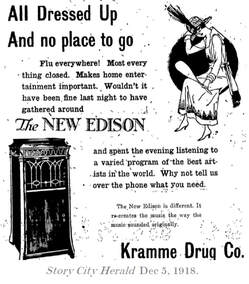 The influenza epidemic in the United States is believed to have started at Camp Funston in Fort Riley, Kansas in March of 1918. From there it spread across the country due to the close quarters and massive troop movements of the military. It is estimated that about 500 million people or one-third of the world’s population became infected with the flu virus. The number of deaths was estimated to be at least 50 million worldwide with approximately 675,000 occurring in the United States. More than 6,000 Iowans would die from the flu. At Camp Dodge in Des Moines, the flu spread quickly through the camp during October of 1918. By the end of the epidemic, more than 10,000 soldiers were hospitalized at Camp Dodge. Deaths numbered just over 700, including one man from the Story City community, Andrew Boyd. At Iowa State College, where several men from Story City were enlisted in the Students Army Training Corps, 53 people died from the flu. Fifty-one of those were SATC men including Henry Larson from Story City who died on October 10. Of the eleven men from the Story City area who died while in service, nine of them died from the flu. At home in Story City, the community was also dealing with the epidemic. As with most of Iowa, cases were beginning to be reported in September. By the October 10 edition of the Herald, the front page reported that the Board of Health ordered the closing of churches, schools, and all public places of entertainment for the week. The following week it was reported that two teenage girls from the community, Severine Sundahl and Tryphena Henryson, had died from the flu. The Story City Board of Health ordered that churches, theaters, pool hall, clubs and all places of public gatherings remain closed until further notice. By the October 24th edition, it was announced that the October draft had been canceled by the war department due to the epidemic. Another young woman in the community had died, Margaret Allen. She was the sister of Andrew Boyd who had died at Camp Dodge the week prior. Funerals during this time were generally limited to immediate family and were held outside at the cemeteries due to the quarantine. The quarantine was finally lifted on October 28 and the schools were operating as usual again. However, the flu cases ramped up again in November leading the Board of Health to instate another quarantine which began on the 25th. This time it lasted for almost another month until December 20th. News of the lifting of the quarantine was printed in the December 19th edition of the Herald. The community was excited to be able to celebrate the Christmas holiday in the local churches. Based on the weekly death notices printed in the Herald between October 1918 through January 1919, it appears that at least eight people in Story City died due to the flu. It was reported that a few community members who were visiting other cities during this time contracted the flu and died away from home. Seven men from the Story City area who were serving in the military during this time also died from the flu. Below are a few articles from the Herald that include notices to the community from the Story City Board of Health with guidelines for staying healthy.
2 Comments
Ron
3/18/2020 06:59:40 pm
Kate,
Reply
Sue Braland
4/13/2020 10:24:30 am
We just realized my mother was a "flu baby"!!!!!
Reply
Your comment will be posted after it is approved.
Leave a Reply. |
AuthorKate Feil Archives
February 2023
Categories
All
|
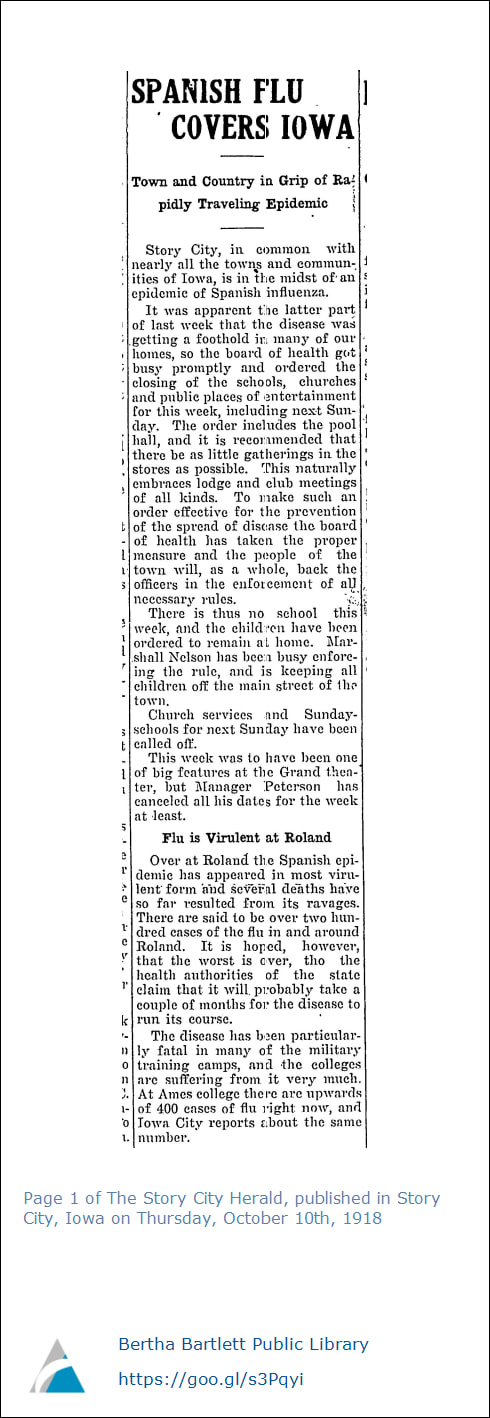
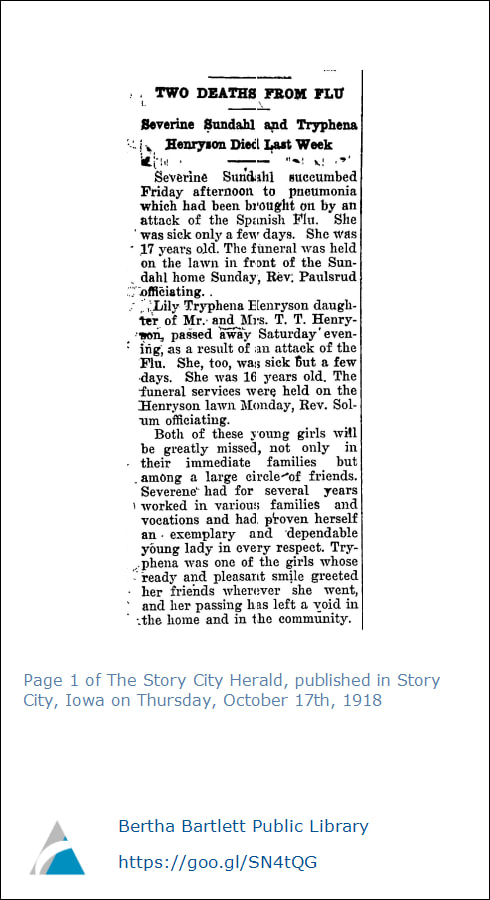
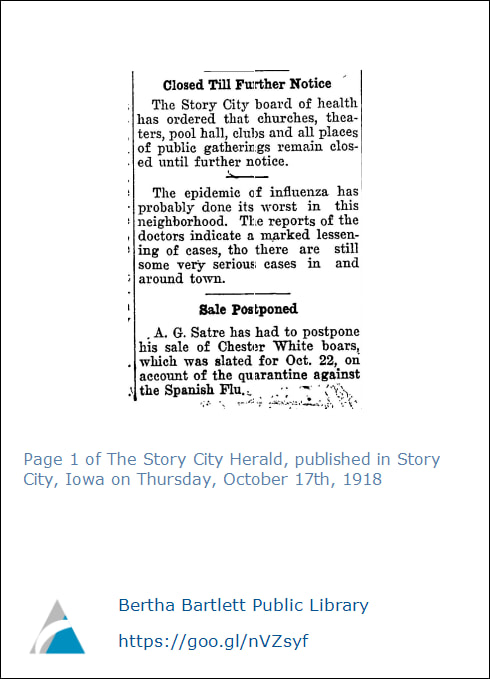


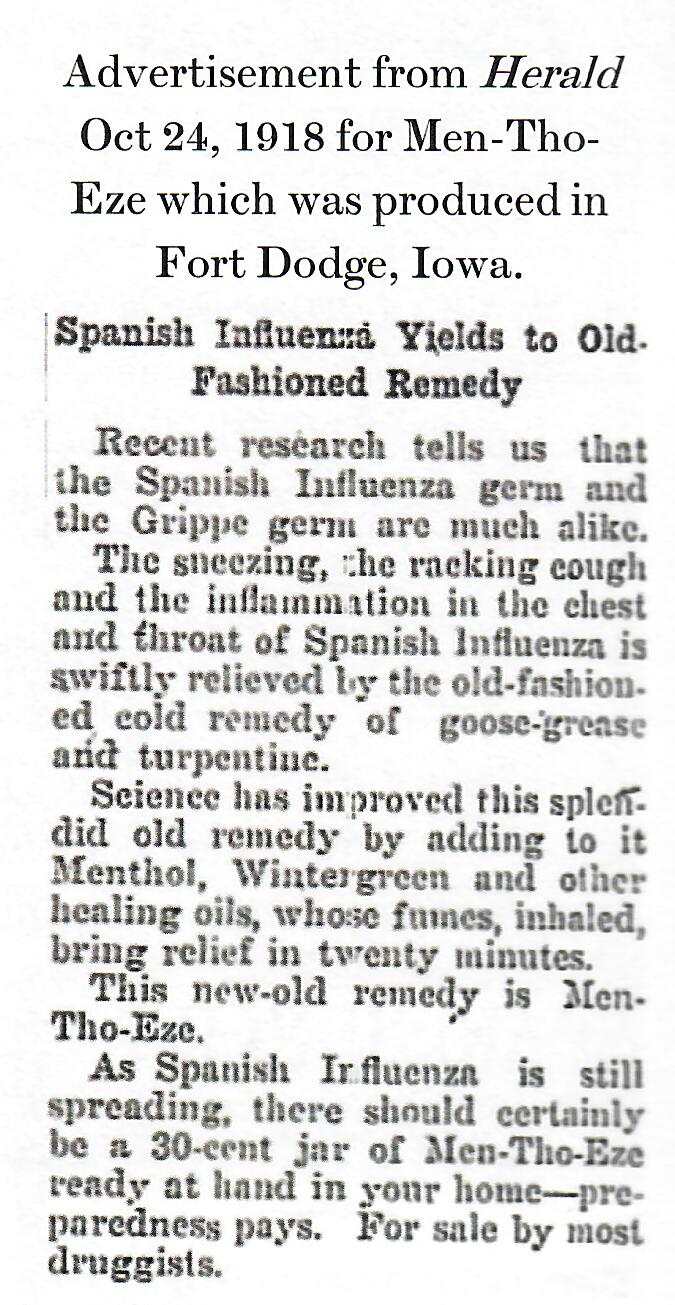
 RSS Feed
RSS Feed
